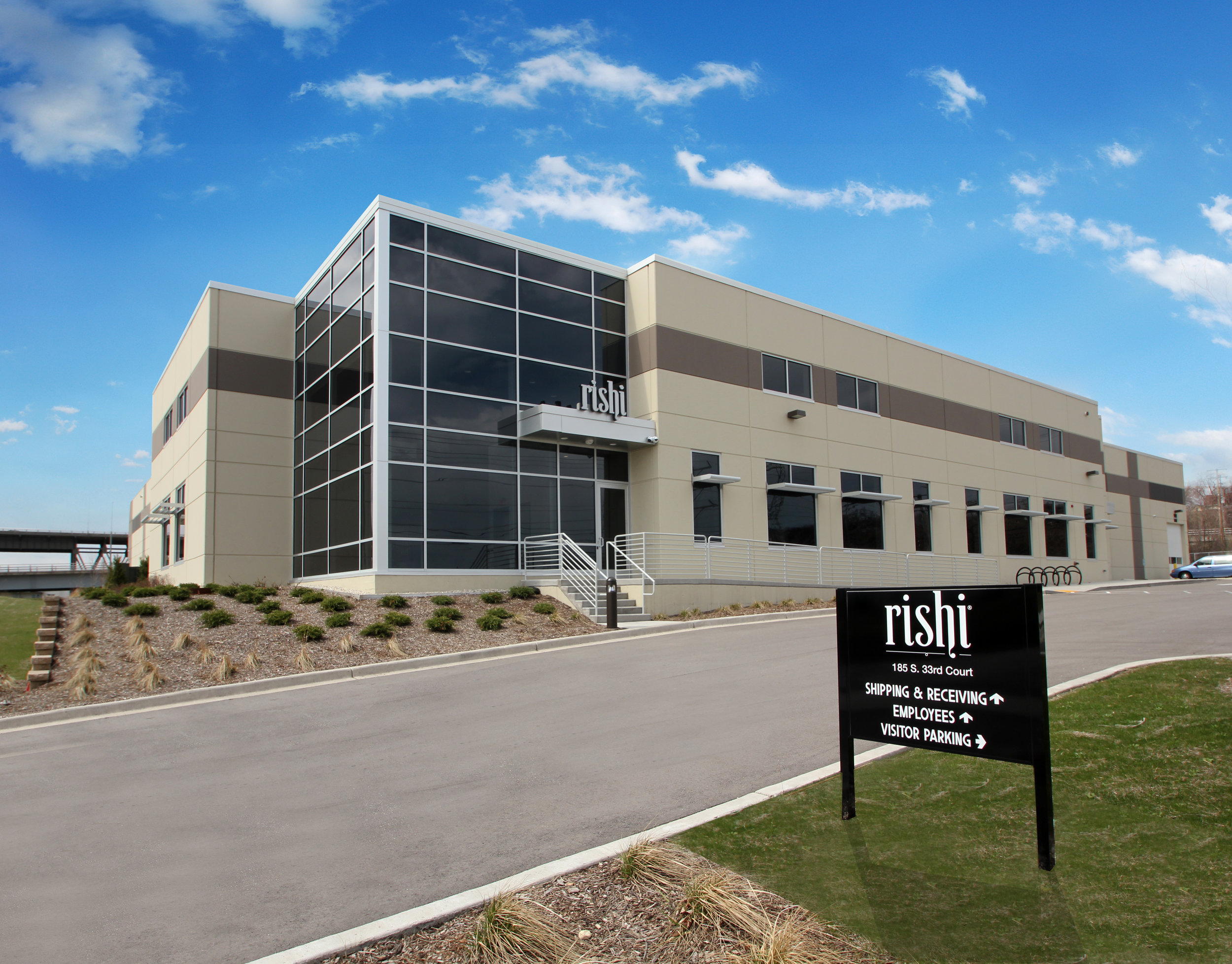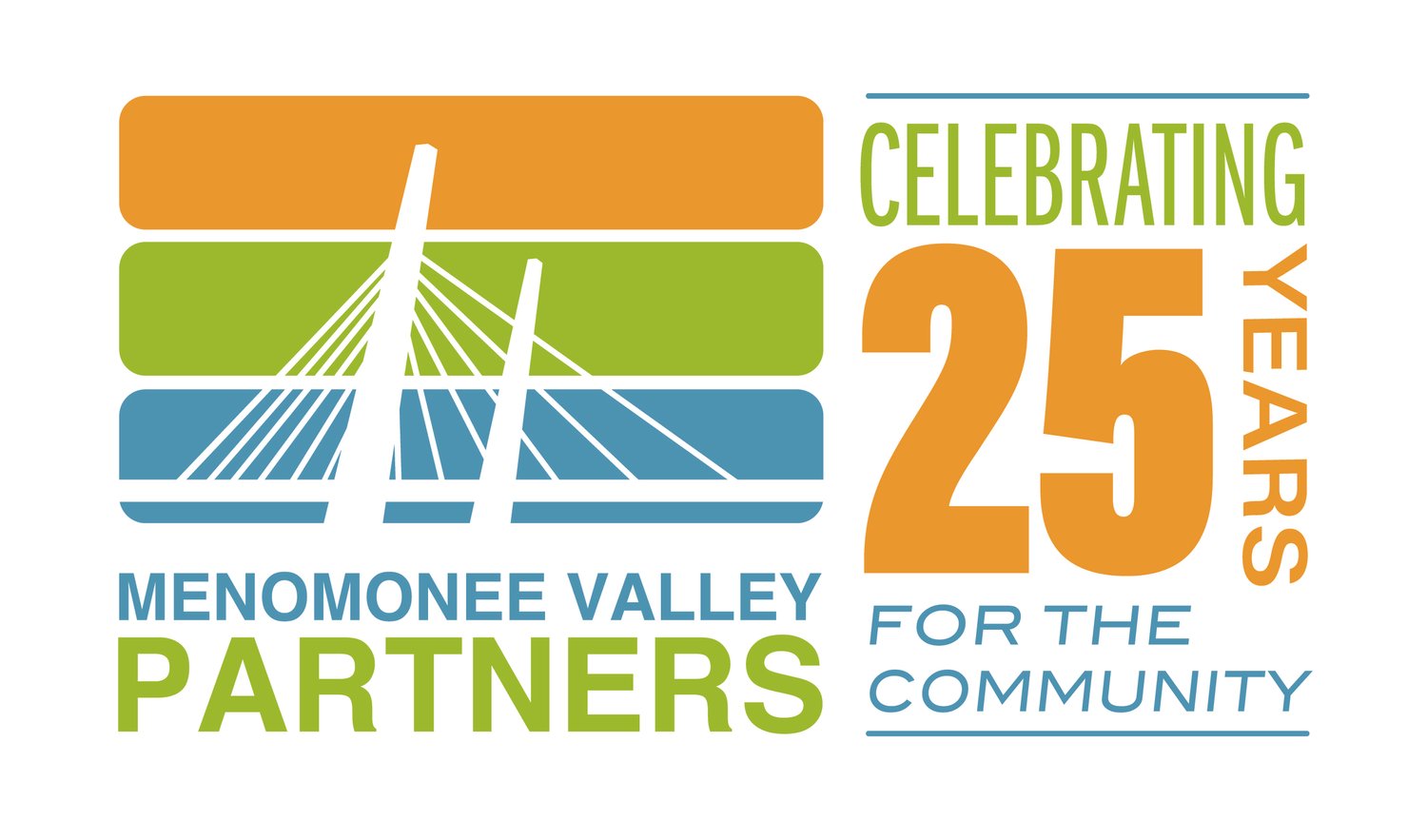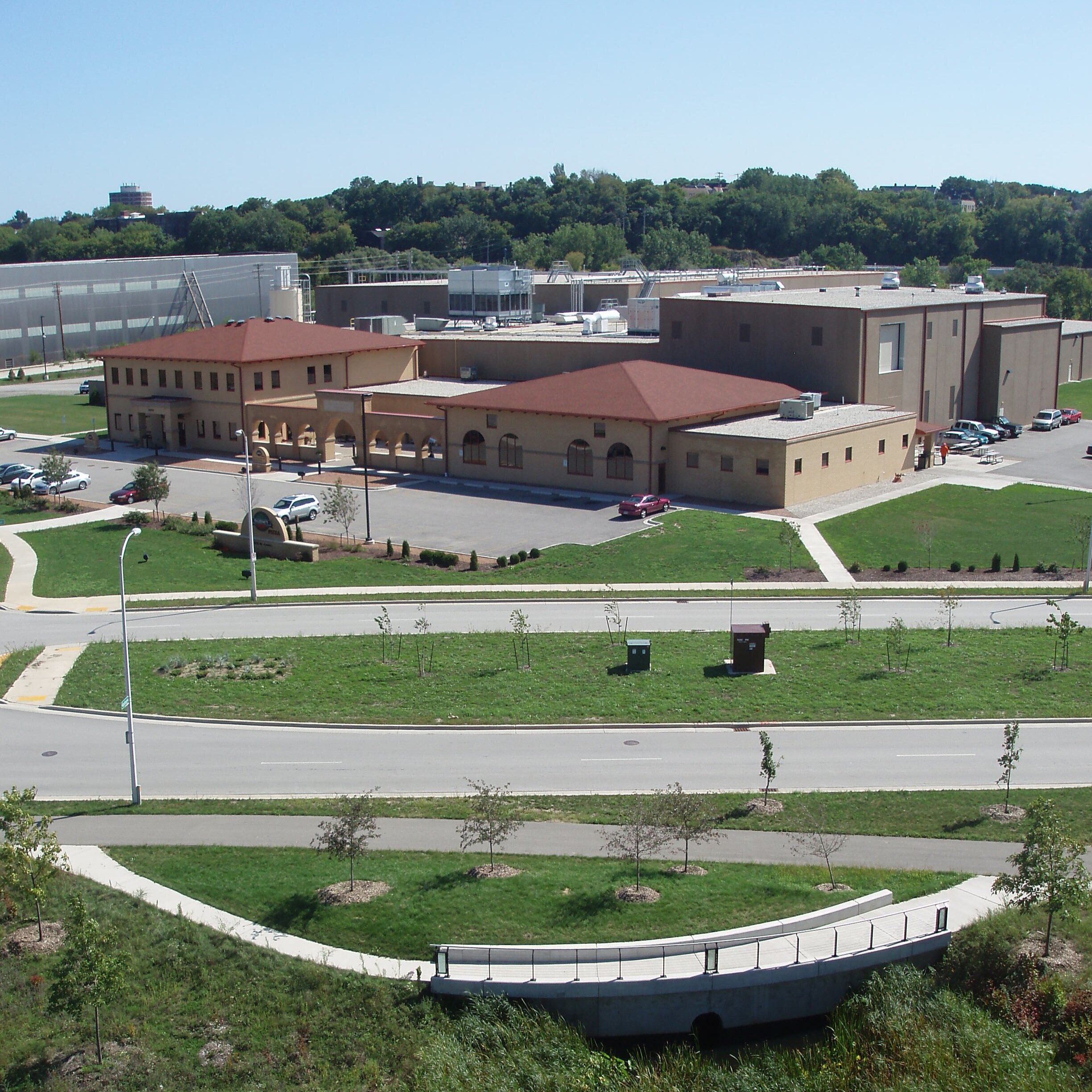
FINANCING RESOURCES
FINANCING RESOURCES
Aside from contacting your bank or credit union, a number of other financing options are available to help you start, grow, or expand your business. This list below is not comprehensive and is to help explore some options you might not have considered.
What you’ll find on this page:
general financing tools
Bruce/Pierce/St. Paul Exterior Enhancement Grant
The City of Milwaukee Commercial Corridors Team and BID #26 is offering a special grant program that expands upon the City's existing Façade Improvement and Signage Grants allowing for a 1-to-1 match reimbursement of up to $40,000 on façade and signage projects. Generally, the types of projects that are eligible include:
New Windows, Doors, Awnings, and Major Facade Alterations
If Part of a Larger Project: Lighting, fencing, awnings, and landscaping
Signs: Channel Letter, Awning , Monument, Neon, Custom, Hanging
Work that will be completed must front the street's edge.
With questions, to discuss project eligibility, or request full project information and application, contact Rochelle Brien at MVP or our partners at the City of Milwaukee: Jessica Sanchez or Matt Rejc.
new market tax credits
The Menomonee River Valley is located in a census tract eligible to receive New Market Tax Credit (NMTC) investments. NMTC investors provide capital to community development entities (CDEs), and in exchange are awarded credits against their federal tax obligations. CDEs are intermediaries that make loans or investments to businesses in the census tract. The NMTC program is flexible with regard to project type and purpose; it can be be used to finance equipment, operations, or real estate. The US Department of Treasury awards New Market Tax Credits to CDEs each calendar year. See which local CDEs have credits available or contact us for help. Companies in the Valley that have used NMTCs include Palermo Villa, Canal Street Commerce Center, and more.
MEDC
MEDC serves Milwaukee businesses by providing low-interest loans. They share the risk with all participants in a project, lend in partnership with a bank, and lend funds at a higher risk level in order to increase the feasibility of a project. Loan amounts are generally between $100,000 and $250,000. Many Valley businesses have worked with MEDC, including: Christopher Kidd & Associates, Charter Wire, Ingeteam, Palermo’s, Plum Media, Splat! Digital Printing, Rexnord, Taylor Dynamometer, Third Space Brewing, and more.
WWBIC
WWBIC offers: small business loans - access to fair capital through loans of $1,000 to $250,000, even for those who may have credit or personal finance issues; business education courses - in-Person and online training on a variety of valuable business topics such as business planning, financials, marketing, social media, web design, etc; and, small business consulting - one-on-one assistance is to help people launch and grow businesses. Generally, loans can be used for start-up capital, inventory and equipment, business expansion, working capital/lines of credit, build outs, and business professional support (i.e. marketing, accounting, bookkeeping, etc.)
opportunity Zone tax incentives
The Menomonee River Valley is within an Opportunity Zone. Opportunity Zones, formed in the Tax Cuts and Jobs Act of 2017 and established in April 2018, are designated census tracts eligible to receive private investments through Opportunity Funds. Opportunity Funds deploy equity investment capital in Opportunity Zones for eligible purposes, including investment in real estate and small businesses. U.S. investors receive a temporary tax deferral and other tax benefits when they reinvest capital gains into Opportunity Funds for a minimum of five years.
The Opportunity Zones program offers three tax incentives for investing:
Temporary Deferral: A temporary deferral of inclusion in taxable income for capital gains reinvested into an Opportunity Fund. The deferred gain must be recognized on the earlier of the date on which the opportunity zone investment is disposed of or December 31, 2026.
A Step-Up in Basis: A step-up in basis for capital gains reinvested in an Opportunity Fund. The basis is increased by 10% if the investment in the Opportunity Fund is held by the taxpayer for at least 5 years and by an additional 5% if held for at least 7 years, thereby excluding up to 15% of the original gain from taxation.
Permanent Exclusion: A permanent exclusion from taxable income of capital gains from the sale or exchange of an investment in an Opportunity Fund if the investment is held for at least 10 years. This exclusion only applies to gains accrued after an investment in an Opportunity Fund
Find out more about Opportunity Zones from the City of Milwaukee, the Wisconsin Housing and Economic Development Authority (WHEDA) and the IRS.
Good City Brewing in Milwaukee created a Qualified Opportunity Fund to facilitate their expansion at the Century City Business Park in 2018.
city of milwaukee business toolbox - grants
The City of Milwaukee has assembled a toolbox of resources designed to jump-start a new business, expand an existing company, and support business relocation. Valley businesses use a number of financing tools, including New Markets Tax Credits, Facade Grants, and the Retail Investment Fund (up to $5,000 per full time equivalent job created). Review options at the City's website or contact Jessica Sanchez at jessan@milwaukee.gov or (414) 286-0793.
Signage Grant: Up to $2,500
Façade Grant: Up to $5,000
Storefront Activation Grant: Up to $25,000
Retail Investment Fund: Up to $50,000
green infrastructure grants
commercial green infrastructure grants (parking lot beautification)
Parking lots are a necessary part of life in Milwaukee but that doesn't mean they can't be green! The parking lot is the first thing your employees, customers, or guests see before entering your business.
Over 45% of Milwaukee is comprised of hard, impervious surfaces like parking lots, streets, and roofs. This means when it rains, the water can't filter back into the soil like it would in a forest or a prairie. This can contribute to poor water quality, sewer backups, and even flooding.
The City of Milwaukee is partnering with the Milwaukee Metropolitan Sewerage District (MMSD) to combat this with green infrastructure, which uses stormwater management to protect, restore, or mimic a natural water cycle.
You can join us by applying for a Commercial Green Infrastructure Grant from the City of Milwaukee. If you have a paved parking lot or other hardscape, this program can provide up to $25,000 for green infrastructure design and/or implementation.
Green Infrastructure Partnership Program
Milwaukee Metropolitan Sewerage District (MMSD) offers incentive funding on a per-gallon captured, reimbursement basis for a host of green infrastructure strategies designed to capture and clean water where it falls, such as new rain gardens, bioswales, green roofs and a variety of techniques that help capture and harness rain and melting snow.
green infrastructure credit
Non-residential property owners in Milwaukee may receive a credit to the stormwater management charge by voluntarily investing in green infrastructure on the property. The City will perform a calculation based on total gallons of capture and provide a credit to the stormwater charge.
Financing Energy Efficiency & Renewable Energy Improvements
PACE Financing (Property assessed clean energy)
PACE Financing allows a property owner to implement energy efficiency and renewable energy improvements without a large up-front cash payment. Property owners repay their improvement costs over a set time period (typically 10 to 20 years depending on the expected life of the equipment installed) through the property tax system, therefore linking improvements to the property and not to the owner.
PACE Equity often helps to fill the final funding gap and finances energy efficient project components, such as boilers, windows, solar systems, HVAC, controls, refrigeration, cool roofs, LED lighting, fume hoods, and chillers.
They lend what they identify that they can save you – meaning it doesn’t cost you more than you would spend anyway due to energy inefficiency.
The minimum project size that are Participating PACE lenders will generally fund is $100,000, but there are exceptions; 100% project financing, up to 20% of property value; Investment may be counted as an operating expense and does not land on your balance sheet.
Learn more in this Urban Land Magazine article.
Energy Innovation Grant Program - due each january
The Energy Innovation Grant Program (EIGP) supports a wide variety of energy projects related to energy efficiency, renewable energy, energy storage, energy planning, and more.
Grants are awarded across several categories of projects:
Activity 1: Renewable Energy and Energy Storage
Solar PV Systems; Installation or upgrade of a biogas, biomass, geothermal, solar thermal, wind, or other renewable resource system;
Activity 2: Energy Efficiency and Demand Response
Energy Efficiency - Reduction of electric and thermal (gas, fuel oil, propane, etc.) energy use in buildings and other assets which may include the installation of efficient technologies and the application of building science and improved management techniques, such as more efficient lighting, improved heating, ventilation and air conditioning systems, and water conservation systems.
Process Efficiency - Addressing unique needs of large energy users or others in improving the energy intensity of their processes (for example, processes related to manufacturing, waste or wastewater treatment) by automation or other means.
Demand Response - Installation of commercial demand response technology that reduces or shifts electricity usage during peak periods in response to time-based rates, or other demand response projects.
Beneficial Electrification - Use of electricity for energy services that would otherwise consume fossil fuels (e.g., propane, heating oil, gasoline, diesel) in a way that reduces overall emissions and energy costs.
Activity 3: Comprehensive Energy Planning & Feasibility Studies for Microgrids
Eligible Valley Applicants: tribes, manufacturers as defined by Wis. Stat. § 77.51(7h)1, 501(c)(3) nonprofits.
Better Buildings Challenge
Learn if you might be eligible for a free energy assessment and which energy efficiency programs the city currently provides. An assessment reviews energy-saving opportunities in your building:
Steps include: preliminary assessment, walkthrough, identification of improvements (ex: lighting, HVAC, etc), operations/maintenance practice recommendations, analysis of savings and costs of capital measures, follow-up meeting to review recommendations which includes benchmarking and estimated savings if target usage met
Better Building Challenge buildings pledge to reduce energy use by 20% over the next decade
Services provided by the Challenge include: Benchmarking, Energy Assessments, PACE Financing, Incentives, O&M Support, and Clean Technology.
UWM Industrial Assessment Center
An industrial assessment is an in-depth assessment of a plant site, including facilities, consumptions, and operations. You receive a final report with baseline analysis, recommendations and cost estimates, and payback calculations.
Offers FREE industrial assessments to help your facility:
save money on utility bills
use less energy
reduce pollution and waste
increase productivity
View program brochure which includes eligibility guidelines and download application.
Focus on Energy
Focus on Energy delivers real, measurable energy and financial savings for Wisconsin’s residents and businesses. They provide utility customers a wide range of services to help you manage your energy use, reduce energy waste, and save money.
Programs connect you with resources and experts that understand your business and can identify your greatest savings potential.
How they can help:
Technical support & advisement from Energy Advisors and partnering Trade Ally Contractors
Financial Incentives on equipment upgrades and retrofits for existing facilities
Design Assistance and financial incentives for new construction projects
Competitive and prescriptive incentives for renewable projects
Training on best practices in the energy efficiency industry
ADDITIONAL financing tools ON west st paul avenue
There are various financing resources available along West St. Paul Avenue from 11th Street to 25th Street. View available properties here.
State & Federal Historic Tax Credits
Historic Preservation Tax Credits encourage private sector investment in the rehabilitation and re-use of historic buildings. Menomonee Valley Partners worked to list the W St. Paul Ave Industrial Historic District on the State Register of Historic Places and the National Register of Historic Places, which allows property owners to access historic tax credits for redevelopment. Twenty two properties are eligible to receive a tax credit for up to 40% of their building's renovation costs, 20% at the state level (up to $3.5 million) and 20% at the federal level. View the press release here. More information is at the Wisconsin Historical Society and/or contact Menomonee Valley Partners. It can take 3-12+ months to apply for and receive approval for tax credit projects depending on their scope. See the Wisconsin Historic Preservation Office’s webpage for the point of contact for the tax credit program.















